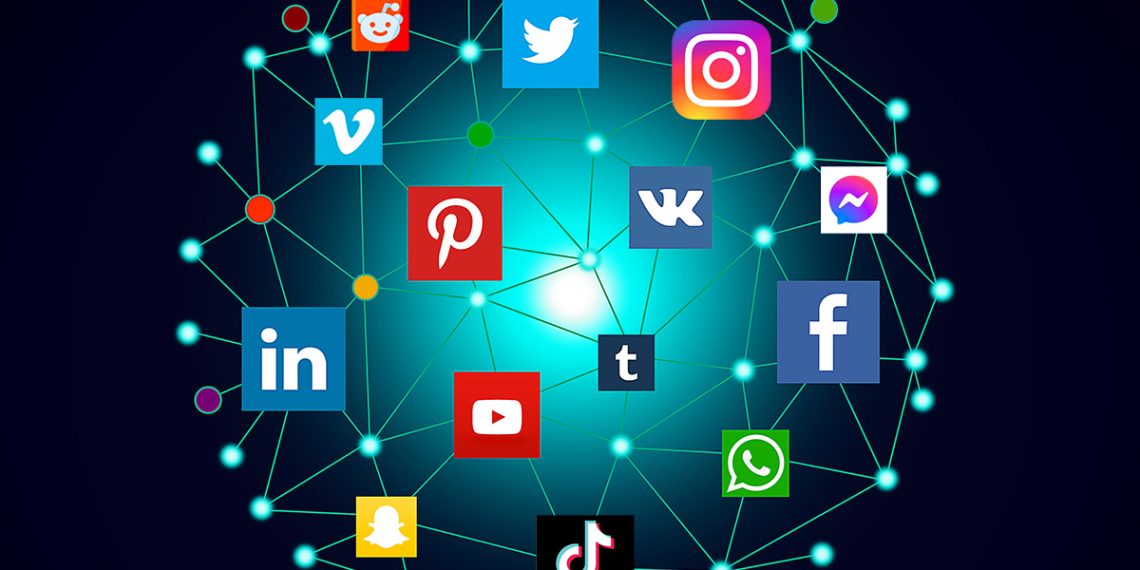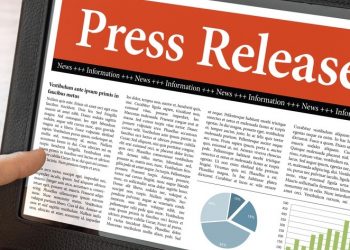Media and news are the foundation of how societies exchange, interpret, and act upon information. Over the past few decades, this landscape has undergone radical transformations, shaped by digital technologies, audience behavior, and evolving trust dynamics. In the United States, where the freedom of the press is a constitutional right, the media plays a central role in shaping public opinion, influencing policy decisions, and documenting social change. The shift from traditional broadcasting to digital-first platforms has redefined how Americans consume, share, and engage with news content.
Today’s media environment operates within a global network of 24-hour news cycles, real-time updates, and user-generated content. While this connectivity allows for faster access to information, it also raises concerns about credibility, misinformation, and media bias. As audiences increasingly rely on online platforms and social media for their news, understanding how modern media functions has become essential for every citizen.
The Evolution from Traditional to Digital Media
Traditional media, including newspapers, radio, and television, once dominated how information was distributed and trusted. The printed press was the cornerstone of journalistic credibility, offering investigative reporting and editorial standards that shaped democracy for centuries. However, the emergence of the internet in the late 20th century marked a turning point.
The Digital Disruption
Digital transformation reshaped the entire news ecosystem. Audiences moved online, seeking immediacy and interactivity rather than waiting for daily editions or scheduled broadcasts. The convenience of smartphones and on-demand platforms accelerated this change. Streaming services, podcasts, and digital news portals have replaced the once-unquestioned dominance of cable news networks.
Key factors driving this disruption include:
- Accessibility: News is available 24/7 through mobile apps and websites.
- Interactivity: Users engage directly through comments, shares, and live discussions.
- Personalization: Algorithms deliver content tailored to user preferences.
- Speed: Breaking news travels within seconds, redefining what “live coverage” means.
The convergence of technology and journalism has given rise to data-driven reporting, visual storytelling, and multimedia integration. Yet, the same digital tools that empower journalism also enable the spread of misinformation and biased narratives.
The Role of Social Media in Shaping News Consumption
Social media platforms have evolved into primary news sources for millions of Americans. Facebook, X (formerly Twitter), Instagram, and TikTok are now major distribution channels for breaking news and public discourse. These platforms allow journalists to reach audiences directly, bypassing traditional gatekeeping structures.
However, this democratization of media comes with both opportunities and challenges:
- Opportunities:
- Wider audience reach and engagement
- Instant feedback and audience interaction
- Ability to crowdsource information during live events
- Challenges:
- The viral spread of false or misleading information
- Lack of editorial oversight on user-generated content
- The rise of echo chambers and polarization
The Influence of Algorithms
Algorithms determine what users see on their feeds. This personalization encourages engagement but can also trap audiences in information silos. When people only see content aligning with their views, public discourse suffers. The result is a fragmented media environment where factual reporting competes with sensationalism and opinion-based narratives.
Media Bias and Credibility in the Digital Era
One of the most pressing issues facing modern media is credibility. Audiences have grown increasingly skeptical of both traditional outlets and online platforms. The perception of bias—whether real or assumed—has eroded trust across the political spectrum.
Journalistic integrity is often challenged by commercial pressures, click-driven models, and corporate ownership. The economic model of online advertising rewards engagement rather than accuracy, leading many outlets to prioritize attention-grabbing headlines. As a result, nuanced stories may be overshadowed by sensational or polarizing coverage.
To maintain credibility, responsible media organizations are now emphasizing:
- Fact-checking and transparency in sourcing information
- Clear distinction between opinion and reporting
- Public accountability, including corrections and open editorial policies
- Ethical journalism standards aligned with professional codes of conduct
The Business of Media and News
The financial model of news production has dramatically shifted. Print subscriptions and advertising once sustained traditional media, but digital disruption has forced outlets to explore alternative revenue streams. Paywalls, memberships, sponsored content, and crowdfunding now supplement declining ad revenues.
The Rise of Independent Media
Independent journalists and small media startups have found new opportunities in the digital ecosystem. With lower entry barriers, individual creators can establish credible platforms through newsletters, podcasts, and YouTube channels. Many of these outlets focus on niche topics, offering in-depth analysis and investigative reporting that mainstream outlets may overlook.
However, financial sustainability remains a constant challenge. Building trust and long-term readership requires consistent quality and transparency. Audiences are more willing to support outlets that reflect their values and demonstrate journalistic authenticity.
The Power of Investigative Journalism
Despite technological shifts, investigative journalism remains the backbone of democratic accountability. Investigative reporters uncover corruption, injustice, and corporate malpractice through rigorous research and verification. In the digital era, collaborations between international newsrooms have made it possible to expose global scandals—such as tax evasion schemes and human rights abuses—with unprecedented reach.
Data journalism has enhanced this process by using large datasets to uncover patterns and evidence. Visualization tools help readers understand complex issues, from climate change to election results, making data-driven storytelling one of the most powerful trends in modern media.
The Future of Media: AI, Automation, and Ethical Concerns
Artificial intelligence is reshaping the future of journalism. From automated news writing to AI-powered content recommendation systems, technology is enabling faster reporting and more personalized experiences. AI tools can analyze vast datasets, summarize reports, and even assist in fact-checking.
However, automation also introduces ethical dilemmas:
- Job displacement for journalists and editors
- Bias in AI algorithms influencing content curation
- Deepfake and misinformation threats that challenge authenticity
The key to integrating AI responsibly lies in maintaining human oversight. Journalism must continue to prioritize ethical decision-making, context, and empathy—qualities that machines cannot replicate.
Public Trust and Media Literacy
The health of a democracy depends on an informed citizenry. As media becomes increasingly fragmented, media literacy—the ability to critically evaluate information—has never been more important. Schools, universities, and community organizations are incorporating media literacy education to help individuals distinguish between credible sources and manipulative content.
Citizens can enhance their media literacy by:
- Verifying news through multiple reliable outlets
- Checking author credentials and publication dates
- Recognizing emotional or sensational language
- Understanding how algorithms influence content visibility
Regulatory and Ethical Challenges
Media regulation in the United States is shaped by the First Amendment, ensuring freedom of expression while balancing public responsibility. However, new digital challenges—like misinformation, hate speech, and data privacy—require modern policy frameworks. Regulators, technology companies, and news organizations must work collaboratively to uphold transparency without restricting journalistic independence.
Ethical journalism should remain at the core of this conversation. Accuracy, fairness, and accountability are timeless principles, even in an era of rapid technological evolution.
The Role of the Audience in Modern Journalism
Today’s audience is no longer passive. Readers, viewers, and listeners actively shape the narrative through engagement, feedback, and content creation. User participation drives media relevance. From citizen journalism during natural disasters to social movements amplified online, audiences are now co-creators of the news ecosystem.
While this empowerment promotes inclusivity, it also blurs the line between professional reporting and personal opinion. Responsible media outlets must navigate this dynamic by maintaining editorial integrity while valuing public input.
FAQs
Q1. What is the biggest challenge facing media and news today?
The primary challenge is maintaining credibility amid misinformation and declining trust. With so much content available online, audiences struggle to differentiate between factual reporting and opinion-driven narratives.
Q2. How has social media changed traditional journalism?
Social media has accelerated the speed of news delivery but also complicated fact-checking and accountability. While it expands reach and engagement, it can amplify misinformation if not properly monitored.
Q3. What role does AI play in modern media?
AI supports content generation, personalization, and data analysis but must be used ethically. Human oversight is crucial to prevent algorithmic bias and maintain journalistic integrity.
Q4. Why is media literacy essential for citizens?
Media literacy empowers individuals to analyze and question information sources, reducing vulnerability to manipulation. It promotes informed decision-making and strengthens democratic discourse.
Q5. What is the future of journalism in the digital age?
The future lies in hybrid models combining technology with human-driven storytelling. Journalism will increasingly rely on data, transparency, and reader trust to thrive in a crowded information ecosystem.
This comprehensive exploration of media and news highlights the profound transformation shaping how society communicates and understands truth. By fostering credibility, embracing innovation, and promoting media literacy, the modern news industry can continue serving as the cornerstone of democracy in the digital era.



















